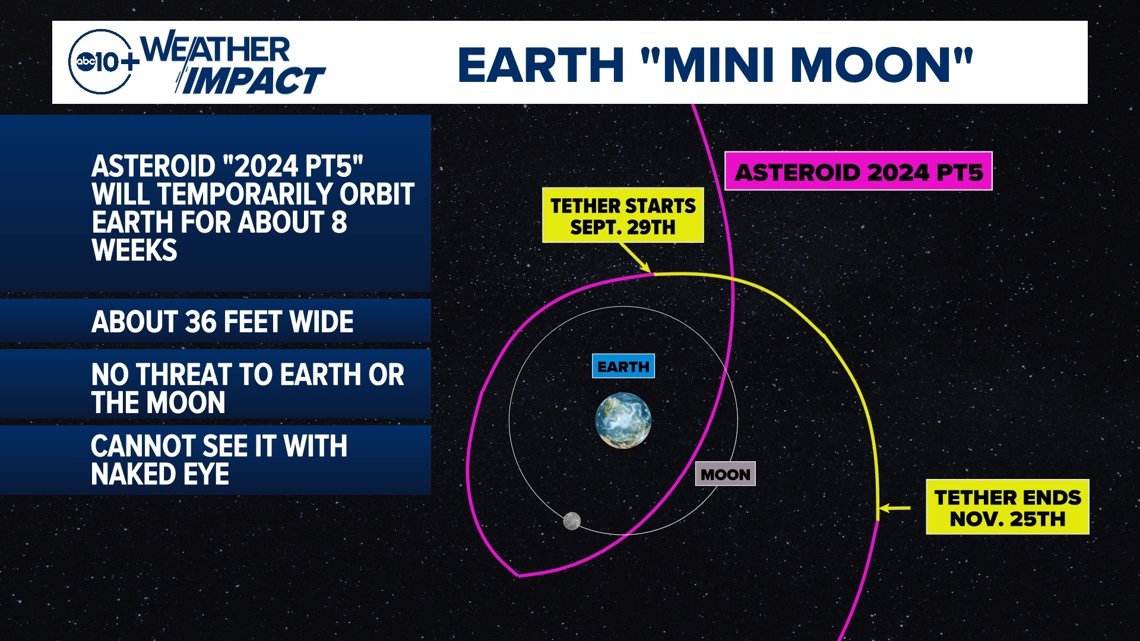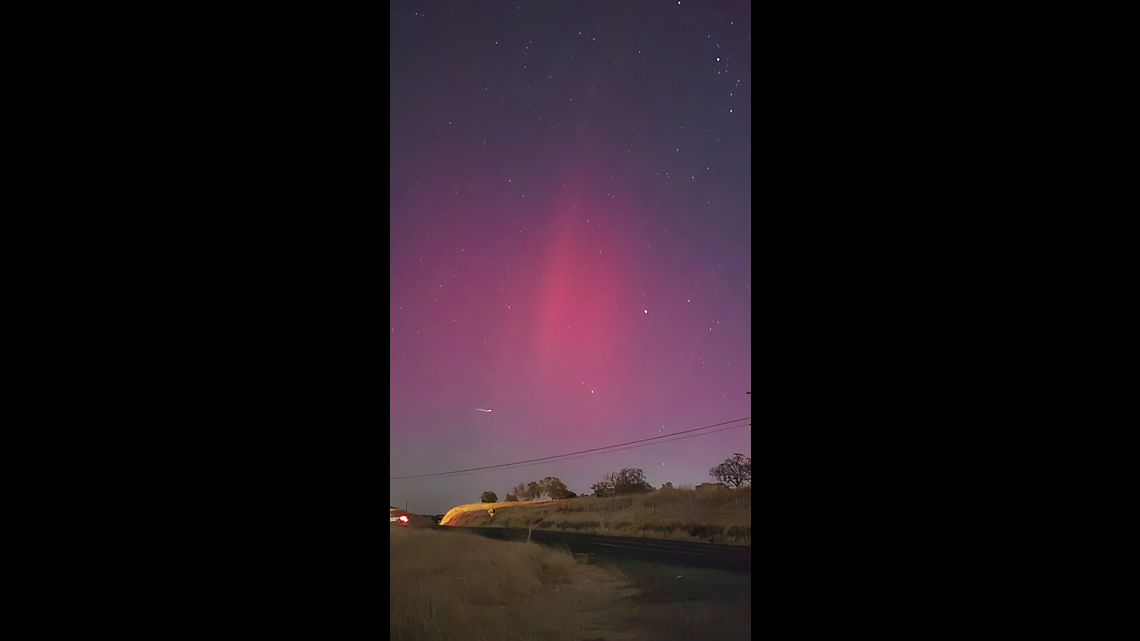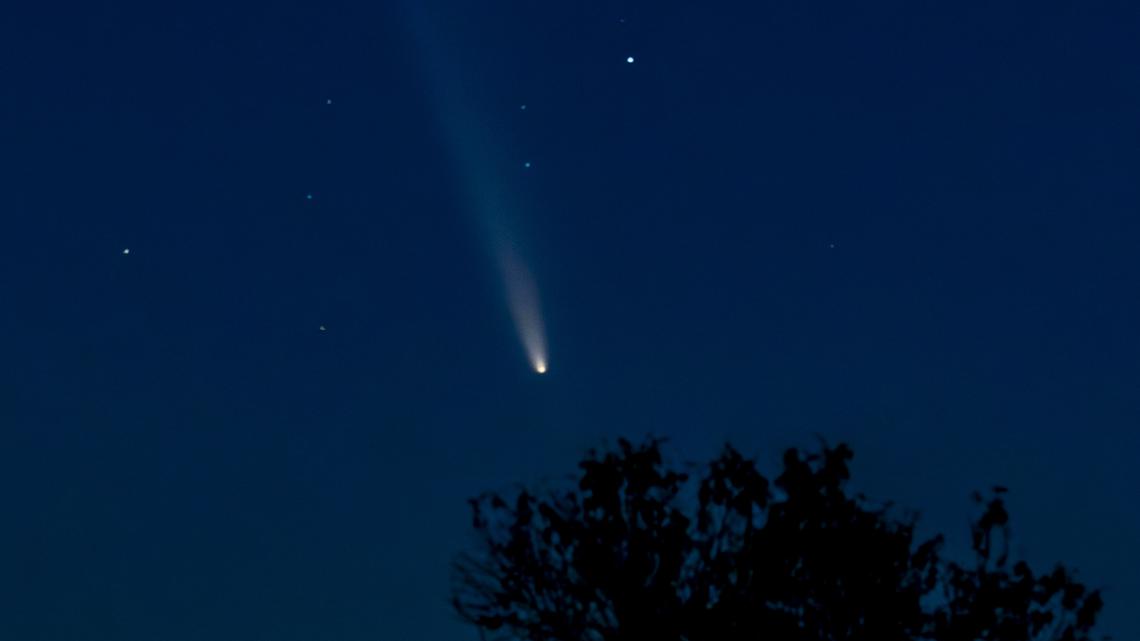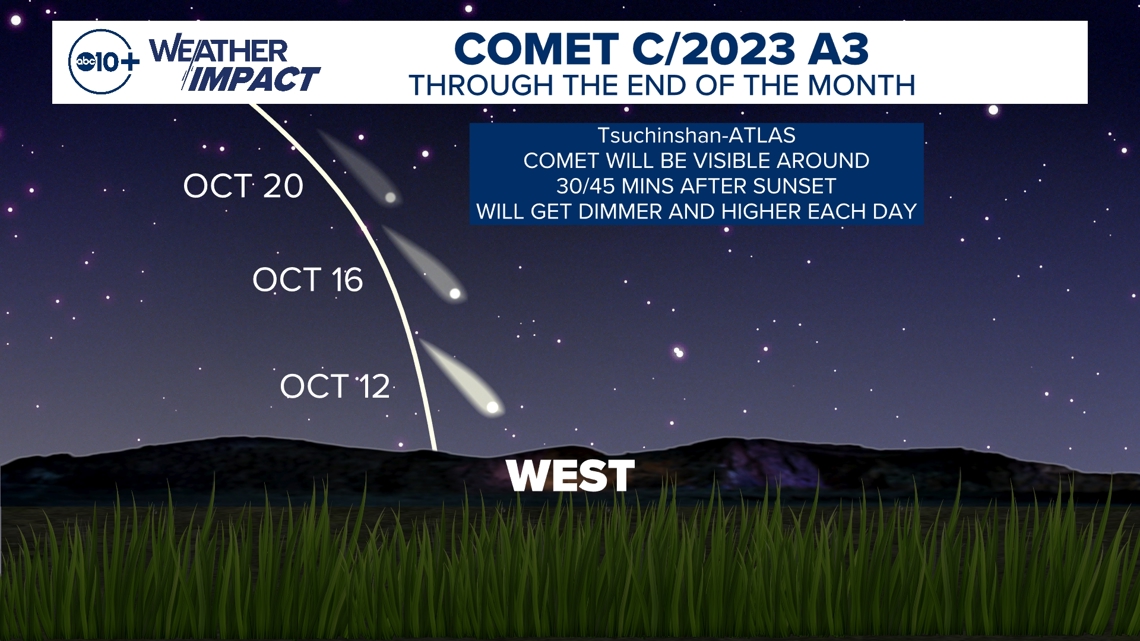SACRAMENTO, Calif. — October continues to deliver on celestial treats. The biggest supermoon of the year will be glowing bright in the night sky. October's full moon is called the Hunter's Moon in reference to the hunting needed to prepare for the winter season.
The reason it will appear so large is thanks to its proximity to Earth. The moon is in what's called a perigee position, which is when its closest to Earth. When it's in the farthest position from Earth, it's called apogee.
The moon will be rising in the east, opposite where you can see Comet Tsuchishan-ATLAS in the west. This will be visible again Friday, but the moon may appear just slightly smaller.
October has been full of nighttime events. The month started just as Earth captured a new "minimoon." A bus-sized asteroid entered Earth's orbit Sunday, Sept. 29. It's too small to be visible to amateur skywatchers, but with a little help from experts, you can witness this "second moon." The official name of the asteroid is 2024 PT5. It's expected to be caught up in our orbit until November 25.


The excitement really started to build when an X-Class flare was detected coming from the center of the Sun. The solar wind carrying that magnetic energy took a couple days to reach Earth traveling at 2.5 million mph, but it was worth the wait. Conditions were nearly ideal to carry it south from the North Pole. People as far as Central California were able to escape city lights to see the Aurora Borealis glow in the night sky with shades of pink, purple and green.


Just as the Northern Lights were wrapping up, another light ripped across the sky. Comet Tsuchishan-ATLAS was starting its show in the western sky. NASA Earth Observatory says this is a once-in-80,000 year sight!
The comet comes from the outer reaches of our solar system and was most visible in the Southern Hemisphere and Tropics until October 8. It will be visible in the Northern Hemisphere through much of the week of October 14.


The comet got its name in 2023 from two discoveries. One was when it was identified by observers at China's Tsuchinshan Observatory. The other was when it appeared on an ATLAS (Asteroid Terrestrial-Impact Last Alert System) telescope in South Africa.


Do you have photos of these amazing night sky treats? Email them to news@abc10.com or download the ABC10 app and upload them through 'Near Me' feature.



















